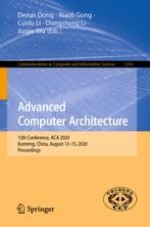2020 | OriginalPaper | Buchkapitel
A Software-Hardware Co-exploration Framework for Optimizing Communication in Neuromorphic Processor
verfasst von : Shiying Wang, Lei Wang, Ziyang Kang, Lianhua Qu, Shiming Li, Jinshu Su
Erschienen in: Advanced Computer Architecture
Verlag: Springer Singapore
Aktivieren Sie unsere intelligente Suche, um passende Fachinhalte oder Patente zu finden.
Wählen Sie Textabschnitte aus um mit Künstlicher Intelligenz passenden Patente zu finden. powered by
Markieren Sie Textabschnitte, um KI-gestützt weitere passende Inhalte zu finden. powered by
